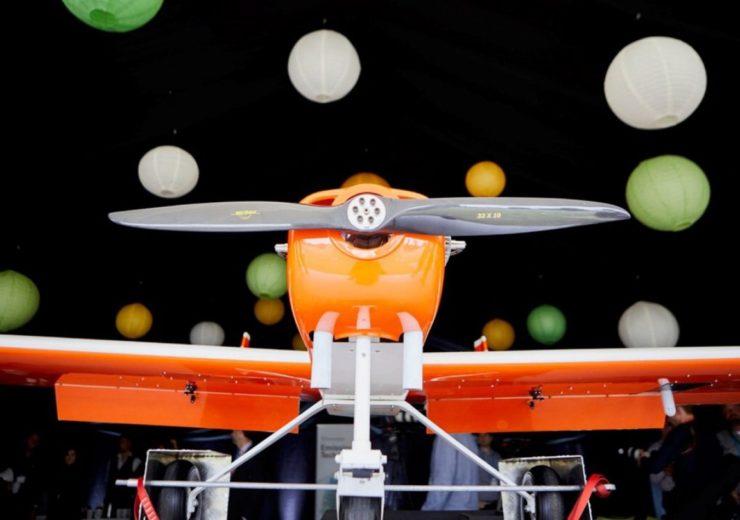By using a drone and sensor technology, BP successfully trialled remote monitoring of methane emissions

BP executed a pilot for remote monitoring methane emissions at North Sea (Credit: BP)
Oil and gas major BP revealed it has executed a pilot project to test remote monitoring of methane emissions on its North Sea assets.
The pilot combined a sensor technology that was designed by NASA for the Mars Curiosity Rover with a fixed-wing remote piloted air system (RPAS), or drone.
BP claimed the RPAS broke the record for the longest commercial drone flight in the UK and had shown the feasibility of the new method to monitor methane emissions.
The oil and gas giant said the drone hovered around the Clair platform at a radius of 550m for 90 minutes. Travelling for more than 185km, the pre-programmed drone live-streamed data collected by the methane sensor.
BP North Sea regional president Ariel Flores said: “Improving our knowledge, understanding and performance by testing new technologies and working closely with suppliers is central to the North Sea’s carbon reduction plan, which aims to limit greenhouse emissions in our North Sea business. This pilot project represents a significant step forward in our ability to do that.”
Pilot to be extended for remote monitoring of methane emissions at other North Sea assets
The oil and gas major now plans to deploy the specialist drone at all of its North Sea assets, including ETAP and Glen Lyon, in 2020.
BP project manager and Clair field environmental lead Joe Godwin said: “We wanted to test a method for collecting large amounts of data on our emissions over long periods of time, without having to send people or equipment offshore. The solution would also have to deal with the turbulent atmospheric conditions that we typically experience offshore in the North Sea.
“Ultimately, we identified the RPAS drone solution provided by UK supplier FlyLogix combined with the ultra precise sensor technology by SeekOps, as a good fit with our requirements. We set up a test project to monitor methane emissions from our Clair Phase 1 platform, West of Shetland.”
Prior to the North Sea trial, BP undertook a leak detection drone programme in the US. Its subsidiary BPX Energy is currently using drone-mounted leak detection technologies, which help in the survey of up to 1,500 well sites every month across all of its operating basins.
